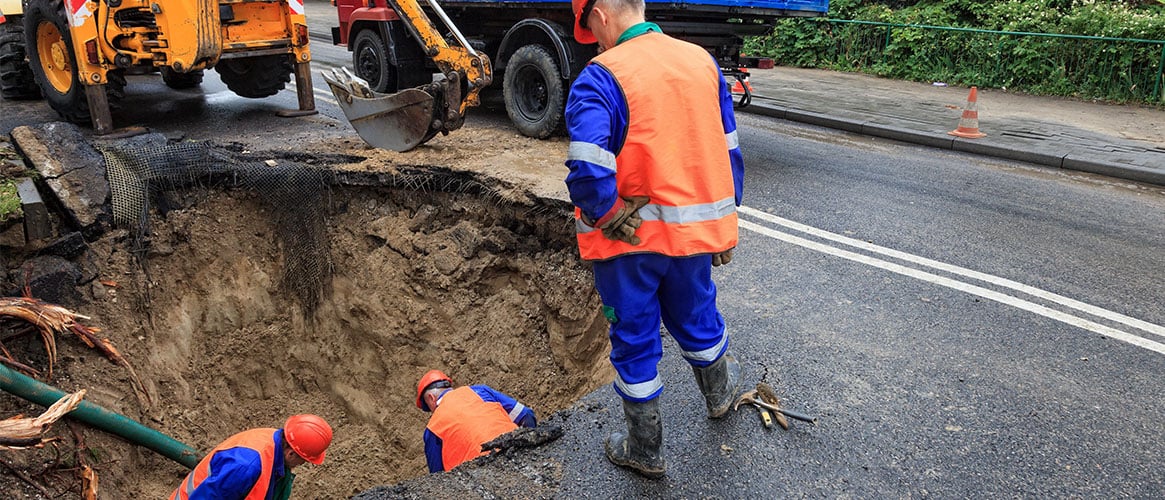According to the Common Ground Alliance, there’s more than 100 billion feet of underground utility lines in the United States. That’s enough electricity wiring, telecommunications cables, sewer pipelines, water pipelines, and natural gas distribution lines to stretch to the moon and back—39 times.
It’s also 100 billion feet of injury risk to utility workers, construction personnel, landscapers, and even private citizens should any of these lines be severed during digging operations.
Knowing where these cables and pipelines are, and what to do if one is severed, is critical to the safety of your employees and the well-being of those living and working in the nearby area.
What your employees need to know about underground digging
If an underground electricity line is severed, not only does the power go out but the ground may energize creating a risk for electrocution. If a natural gas pipeline is damaged, a gas leak may occur—and depending on the severity of that damage, a fire or a natural gas explosion are both possible.
To help you, your employees, or anyone else digging into the ground, the 811 Call Before You Dig hotline is available. The service is free and by calling in, you reduce the risk of striking an existing utility line to less than one percent.
What your employees need to do when digging underground
In California, the call to 811 should be made at least two working days (but not more than 14 working days) before digging operations begin. Each affected utility then sends a worker out to mark the approximate location of utility lines and also specify what they are (electrical, cable TV, natural gas, etc.).
During the operation, if a utility is damaged, your employees must stop work immediately. Affected utilities and emergency response should be notified as soon as safely possible.
If a gas line was struck, evacuate the area and notify the gas company right away.
If any type of wiring is severed, these could be electrical wires, TV cables, or phone lines. Workers should not take the time to investigate what the wires are. Best practices dictate they should presume the worst case scenario—that the lines are electrical, they are live, and that the ground is energized. Workers should then act accordingly to safely exit the area as soon as possible.
- Anyone inside a vehicle on energized ground should treat the situation the same way as being in a vehicle that has come into contact with power lines: remain in that vehicle unless it catches fire, and only then attempt to exit the car using a specific method.
- Anyone on the ground should exit the area right away, with feet together…using a shuffling motion where feet are always in contact with the ground.
When safely possible, make the necessary notifications so the lines can be de-energized and repair crews dispatched.
What to cover at your safety meeting about underground digging
The safest tool you have in your tool box is the telephone. Whether it’s you or a designated employee that makes the 811 call, discuss with all employees how the process works and that digging may not begin until after the area is marked.
Other information to cover includes:
- Where to dig in relation to the utility line markings.
- The procedure to follow in the event an electricity line is cut, including staying in vehicles or how to exit ground that may have been energized.
- Notification of utilities and emergency response if contact is made with existing utilities.
With 100 billion feet of underground utility lines crisscrossing our country, it’s impossible to know where it all is. One phone call allows you and your workers to learn in advance where existing lines are and greatly reduces the risk of damage and injury.
By calling 811, you likely won’t have to call 911.

